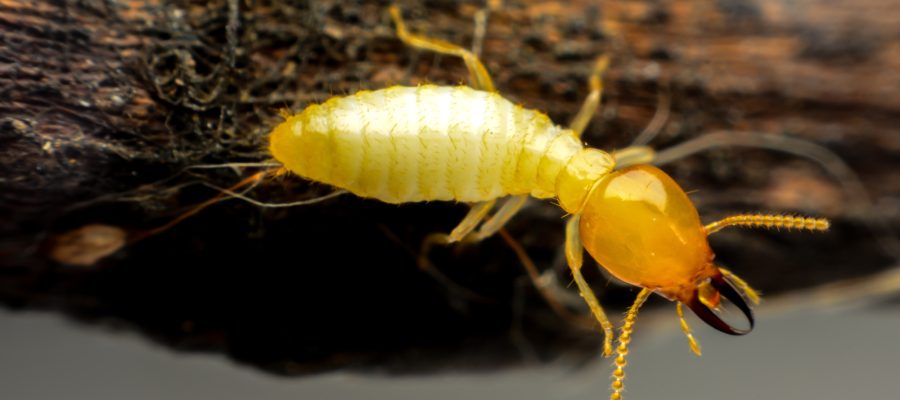6 Termite Protection Tips for Your Home
- November 7, 2022
- in How To Identify Termites
- by Steven Gill

What do you want first, the good news or the bad news?
The bad news is that there are about 350 species of termites that now call Australia home. The good news is that only about 20 of them damage buildings. But as we’re sure you’d agree, that’s 20 too many.
Termites can do thousands of dollars worth of damage in a matter of months. If you don’t catch them quickly, they can eat away at the very fabric of your home.
Every Australian home needs termite protection of some type. Let’s review 6 tips that can help you keep these little blighters out of your woodwork.
One of the most effective forms of termite prevention is a chemical termite barrier. The entire exterior perimeter of your home will be treated with a termiticide.
One of the best-known and most trusted brands is an American company called Termidor. It binds with the soil to create a barrier that termites can’t see or smell. Because of this, the termites make no attempt to avoid it.
It works two ways. It can kill termites through contact or ingestion. Termites are not killed instantly.
They carry it with them and pass it on to the rest of the colony. Gradually, it spreads through the colony, killing it. In this way, it stops infestations before they begin.
It’s important to have chemical barriers regularly checked. They can be disrupted by changes to landscaping and home renovations. You can’t buy effective chemical termite barriers yourself – a pest control professional must apply them.
Termite bait stations are an alternative way to keep termites away from your home.
The bait stations are installed below ground and spaced approximately 3 meters apart. They’re then filled with enticing cellulose emitting products.
The goal is to attract foraging termites to determine if they’re present in the area. When they come into contact with the Safeguard “Allways Active bait station”, they’ll take the poisonous bait back to the colony where it will slowly begin to kill them off.
We will then check the station approximately every 12 weeks and when we confirm there is activity in the station we will check the stations every thirty days. You can think of it like having an intruder alarm for a very slow-moving, but expensive uninvited guest! It’s a cost-effective solution for people who don’t fancy having chemicals sprayed around their homes.
Around 10% of Australian homes still rely on wood for their heating. Whether you rely on it as your main fuel for heating or just use it occasionally in the winter, stored wood can be a termite magnet.
If you’ve got a woodpile up against the side of your house, you’re inviting them to an all-you-can-eat buffet. Stacked logs make the perfect hiding place for a colony looking for a new home. They also give them easy access to your house.
Firewood isn’t the only type of wood to think about. If you’ve been doing some DIY projects, don’t store offcuts right next to your house. Even plants like ivy and vines creeping up the walls can provide highways for termites looking to avoid chemical traps you’ve set for them.
Many people like to use hardwood mulch to create attractive borders around their houses. They look great and protect delicate roots. The problem is that they can be a smorgasbord for termites, as they love moisture and wood!
They’ll quickly move on to your house and cause all kinds of carnage. Thickly spread mulch is particularly inviting because it provides a warm, sheltered environment for them to make their home. They can then use this as a bridge over termite treatments to access your house.
Don’t conclude that you can’t use mulch or need to spray it with termite treatment. The best course is to use it very sparingly in the 30-centimeter perimeter of your home and water it sparingly. This will prevent termites from taking up residence and using it as a bridge to your house.
If you’re looking for a non-toxic solution, a physical barrier is a great answer. The idea is to erect a barrier that termites can’t cross. The problem is that unless you’re building a new house or carrying out a major renovation, they’re tricky to install.
If you are in either of those situations, seriously consider adding:
The advantage of these systems is that they force termites out into the open. They won’t be able to build hidden networks of tunnels. Their mud tubes will be easier to spot, letting you know that you’re under attack.
This lets you protect your home from termites before they become established.
Termites are not always easy to spot. They do leave mud tunnels and chow down on wood. But by the time you spot them, they’ve often done a lot of damage.
That’s why it’s a good idea to invest in an annual termite inspection from a reputable pest control company. They know the early signs to look for. They can also check whether your termite protection measures are still working well.
If they do find them, you’ve got the best people on hand to come up with a treatment plan.
Termites can cause tremendous damage. Termite protection is something that is a necessity, not a luxury, for all homes and businesses.
You can trust Safeguard Pest Control to help you keep termites away. We offer termite protection solutions for homes and businesses throughout the Sunshine Coast.
Give us a call today at 07 5477 6675 or get in touch online for a free estimate.
Array